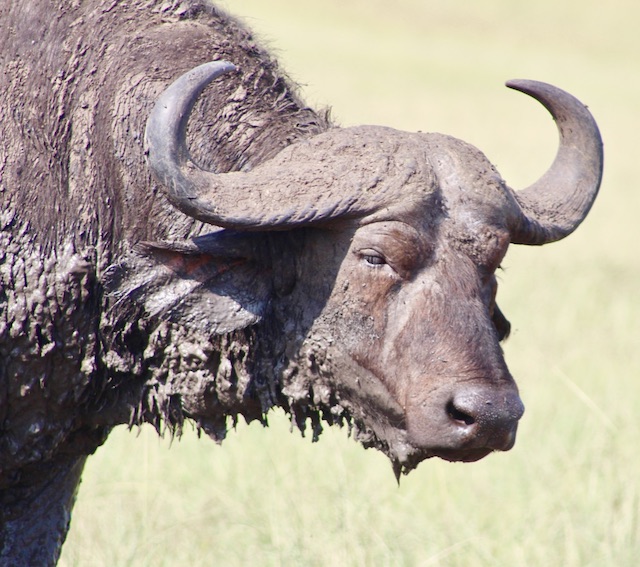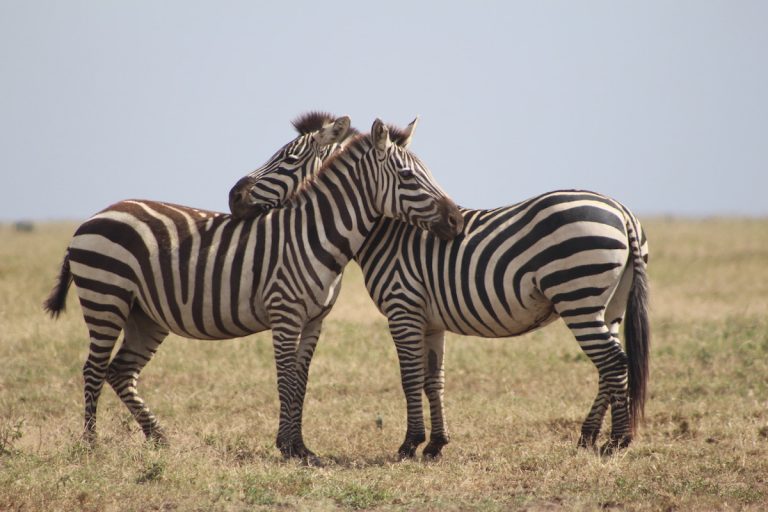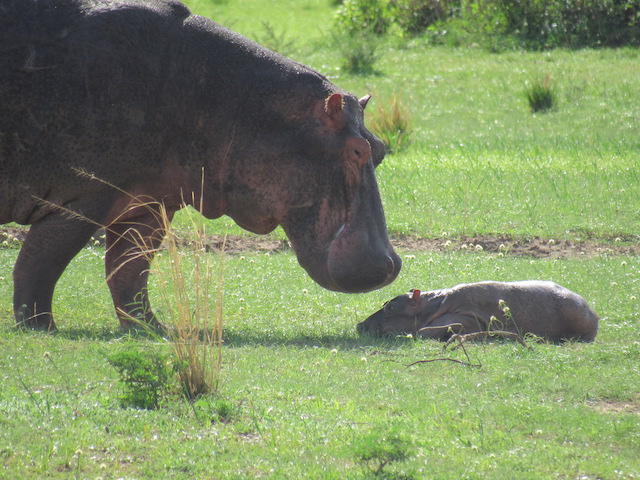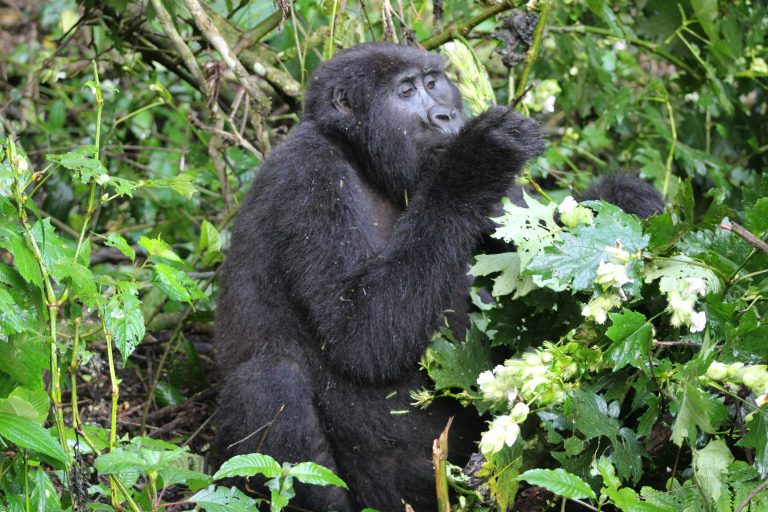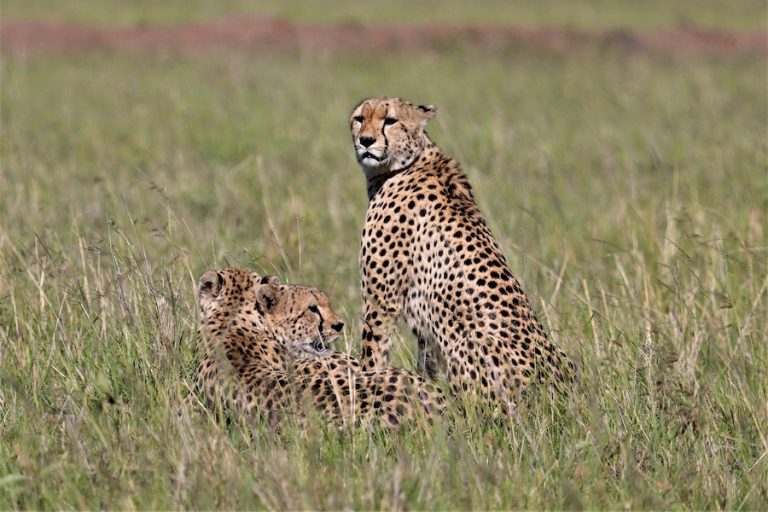Lake Nakuru is popularly known as the “Birder’s Paradise”. It is one of Kenya’s most invigorating safari destination and is often included on a visit to Kenya. Located in Nakuru town near Lake Nakuru, this lovely park encompasses around 188 square kilometres of rocky escarpments, pockets of acacia bush, and a cascade that encircles Lake Nakuru on the Great Rift Valley bottom. The Park is famed for its thousands of flamingos that paint the lake’s sceneries as they graze on the algae in the shallows.
Lake Nakuru is located in the Rift Valley at an elevation of 1,754 meters (5,755 feet) above sea level. Protected by Lake Nakuru National Park, the lake boasts an abundance of algae used to attract a large number of flamingos, who famously line the shore. Other birds, as well as warthogs, baboons, and other large water animals, thrive in the area. Lake Nakuru’s water level dropped dramatically in the early 1990s but has since recovered significantly. However, the lake experienced an alarming increase in water levels in 2013, causing flamingos to migrate to Lake Bogoria in search of food. Even so, some flamingos continue to wade the lake’s shore.
Lake Nakuru is beautiful all year, a great birding site, and a simple park to explore. The Park was established in 1957 as a conservation area for the birds of Lake Nakuru, particularly flamingos: the protected area only comprised Lake Nakuru and a tiny portion of the adjacent territories. This was done to protect the lake, prevent pollution, as well as protect the bird life. Lake Nakuru National Park was designated as one of Kenya’s national parks in 1968, which occurred after the park’s size was increased to cover the park’s northern savannah areas, bringing the park’s total area to 188km2. As a result, several mammals including both black eastern and white rhinos were also introduced to the park, transforming it from a bird sanctuary to an animal park.
Rhinos were brought to Lake Nakuru Kenya Park in the 1980s as part of a Kenyan government campaign to save the endangered creatures, whose numbers were rapidly dropping. This act was the first of its sort in Kenya, and Lake Nakuru National Park was proclaimed the country’s first government-protected rhino sanctuary in 1984. In 1986, the Kenyan government created a 188km2 electric fence around the Park to protect rhinos from poachers. This barrier served and continues to serve the aim of keeping poachers out of the park; as well as keeping rhinos within the park’s boundaries. Following the successful completion of the 188km2 electric fence, the Kenyan government officially designated Lake Nakuru Park as a rhino sanctuary in 1987.
Lake Nakuru National Park is a UNESCO World Heritage Site, and it has been designated as an Important Birding Area (IBA) since 2009 with over 400 bird species that have been registered here.
Attractions in Lake Nakuru National Park
Wildlife
With unique savannah vegetation and other diverse habitats, over 50 mammal species live in Lake Nakuru National Park. Despite its tiny size in comparison to other national parks and reserves in Kenya, Lake Nakuru is home to a diverse range of wildlife species: waterbucks, white rhinos, black rhinos, Rothschild giraffes, leopards, lions, cheetahs etc.
Being a rhino sanctuary, the park is home to both black and white rhinos. Lake Nakuru now boasts approximately 150 rhinoceros divided between black and white rhinos. The park is surrounded by an electric fence, which protects the rhinos from poachers who would kill them for their horns. This electric fence also keeps rhinos from wandering out of the park.
Lake Nakuru
Lake Nakuru is one of the national park’s most well-known features and it is where the Park derives its name. The lake’s fame comes with the enormous quantity of pink flamingos that can be spotted around the lake’s shoreline. Lake Nakuru is a small soda lake that draws flamingos as they feed on algae on its alkaline edges. Many other bird species can also be spotted in this lake, making it a popular birding destination for both native and migratory birds. There are two varieties of flamingos that may be seen at this lake: lesser and greater flamingos, which swarm the lake with their pink colour. These flamingos can be observed from various viewpoints across the national park, including the Baboon Cliff and Lion Hill.
Birds
Home to incredible colonies of pink flamingos among other bird species, Lake Nakuru National Park is a fantastic habitat for birds and is ranked one of the top birding sites in Kenya. The park is home to approximately 500 bird species spread across its scenery. The large bird population contains a range of birds including endemic species that only live in Kenya, near-endemic species, threatened species, and migratory bird species that travel to the park from November to April. The major attraction and highlight of Lake Nakuru’s bird population are the millions of greater and lesser pink-coloured flamingos that crowd the lake and paint it with pink bands of colour.
Aside from the flamingos, other bird species present at the Park include the Abyssinian ground-thrush, Arrow-marked babbler, Black-tailed godwit, Black-winged lapwing, Brimstone canary, Brown-backed-scrub robin, Crab-plover, Eastern imperial eagle, European roller, Grey-crowned crane, Grey-headed woodpecker, Great snipe, Greater spotted eagle, Grey-crested helmet-shrike, Hildebrandt’s starling, and Kenya rufous sparrow.
Other notable species in Lake Nakuru National Park include the Lappet-faced vulture, Lesser kestrel, Long-tailed widowbird, Maccoa duck, Slender-billed greenbul Montane white-eye, Northern Puffback, Western reef heron, Pallid harrier, Shining sunbird Red-capped lark, Rufous-throated wryneck, Rüppell’s vulture, Rüppell’s robin-chat, Schawlow’s wheatear, Sooty falcon, Speke’s weaver, White-fronted bee-eater, White-headed vulture and many more.
Viewpoints
Lake Nakuru National Park has a distinct hilly topography that not only adds to the park’s attractiveness but also creates fantastic ridge vistas from which to watch animals and birds as well as other areas of the park, including Nakuru town. The most notable viewpoints in the Park include the Baboon Cliff, Lion Hill, and Out of Africa viewpoints. The viewpoints are all scenic in their own right offering you fantastic views of the park and beyond.
Waterfalls
The most notable fall in Lake Nakuru National Park is Makalia falls. Makalia Falls are a hidden gem with a soothing effect from the flowing waters and the water breeze. This is one of the highlights of a visit to Lake Nakuru National Park as the falls thrive with spectacular scenery and offer amazing game views.
Activities in Lake Nakuru National Park
Wildlife Viewing
Lake Nakuru National Park is home to a variety of wildlife and is ideal for wildlife viewing. Game drives in the Park will treat you to sights of the park’s common animals such as buffaloes, rhinos, leopards, antelopes, zebras, and lions, among others. Game viewing in Lake Nakuru National Park can be done all day depending on your interests. Otherwise it is often done early morning and evening when it is cool for animals to be out.
Bird-watching
Lake Nakuru National Park is home to approximately 500 species of birds, including flamingos, which makes it exceptionally exciting and great for bird watchers. You will be delighted by the various types of birds that can be found in the savannah grasslands, forests, and along the shores of Lake Nakuru. These birds can be easily viewed from the park’s popular overlooks, but the main sport for the birds is at Lake Nakuru, where birds can be seen in all corners.
Lake Nakuru National Park is a RAMSAR Site – a key birding area in Kenya and the world at large. Birders on a safari to Lake Nakuru National Park should expect to see the lesser and greater flamingos, Egyptian geese, white-necked bees, African fish eagles, and greater pelican birds, among several other birds.
Visit the Baboon Cliff
This is the most popular viewing platform in the park and it provides a magnificent perspective of the entire valley. Baboon Cliff gets its name from the baboon tribes that are known to wander the region. The cliff is also a beautiful location for picnics, with several picnic seats at the top. However, you should be cautious when eating because baboons have been known to steal food.
The views from Baboon Cliff are greatest in the morning when the sky is clear and the haze from the rising sun illuminates the panoramic view. For those looking to stretch their legs, there are several wonderful hiking routes around the Cliff, and the cliff itself is easily accessible by automobile.
Explore Makalia Falls
Makalia Falls is a minor waterfall in Lake Nakuru National Park’s southern region, and it is easily accessible a short drive from the park’s gates. The flow of the falls is seasonal, and it might come to a halt during the dry season. The Makalia River feeds the falls, which have a height of about 10 meters. Although Makalia Falls is not the most spectacular waterfall in the world, it is an excellent location for a short stroll or an afternoon picnic while in the Park.
Camping
Camping is also a popular safari activity in Lake Nakuru National Park. The thrilling excursion allows you to sleep under the stars in the wilderness and see nature first hand. Lake Nakuru national park is one of the finest camping places in Kenya and it offers campers more than just sleeping beneath the stars in tents; campers in Lake Nakuru National Park may enjoy the area’s unique vegetation, semi-humid weather, and if lucky, a chance to see a few animals up close.
Lake Nakuru National Park features seven active camping sites that are spaced out in the northern and southern areas of the park. Campers can expect mild night-time temperatures, stunning views of the concentrated flamingos that resemble a pink blanket covering the surface of Lake Nakuru National Park, and gorgeous vistas of the park’s surroundings.
Best Time to go to Lake Nakuru National Park
Lake Nakuru National Park is mostly known for its rewarding bird-watching tours; hence, the best time to visit Lake Nakuru is during the wetter months (November to April), which are ideal for bird watching given the presence of migratory birds during this time.
On the other hand, game viewing in Lake Nakuru National Park is excellent all year, though a visit here can be enjoyed during the peak dry season (June to September), when safaris in Kenya’s top destinations such as Masai Mara and Amboseli are most popular.
Getting to Lake Nakuru National Park
By Road
Lake Nakuru National Park is located 156 km northwest of Nairobi and is accessible from the city. The most common way into the park is through the main gate, which is about 4km from Nakuru town. Lake Nakuru National Park is also accessible via the Lanet Gate on the main road connecting Nairobi and Nakuru. The Nderit Gate, on the other hand, is the main entry used by visitors coming from Maasai Mara or Elementaita to the park.
If you take the Nairobi-Nakuru highway from Nairobi, you will have a great view of the Rift Valley. It is about a 30-minute drive from Nairobi to a scenic lookout point which is elevated at 2200 meters (7200 feet) above sea level. From this point, you can see the volcanoes Suswa and Longonot. This stop also has several antique shops where you can buy souvenirs. Because seeing and experiencing the entire park will take a full day, you should leave early enough to enter around 09:00 unless you have another day to spend in the area.
By Air
Furthermore, Lake Nakuru National Park can be accessed by air and many visitors to the Park fly into Nairobi’s Jomo Kenyatta International Airport. This is a 25-minute flight to the Naishi airstrip, which is located within the park. The Naishi airstrip serves the park’s tourism and Kenya Wildlife Services operations.
Where to Stay in Lake Nakuru National Park
There are numerous lodging options both in the park and the nearby town of Nakuru and these include;
- Lake Nakuru Lodge
- Sarova Lion Hill Game Lodge
- Sarova Woodlands Hotel & Spa
- Ziwa Bush Lodge
- Flamingo Hill Tented camp
- Lake Nakuru Sopa Lodge
- The Stem Hotel
- Punda Milias Nakuru Camp
- Mbweha Camp
- Sleepway Cottages

